What is Cellular Data? What You Should Know About It
In today’s world, familiarity with cellular data terms like 3G, 4G, and 5G is common. All of these are types of cellular data. This guide will explain what is cellular data, and the differences between Wifi vs Cellular Data, and provide tips on optimizing your cellular data usage to save you money.
1. What Is Cellular Data?
Wifi vs Cellular Data have revolutionized how we connect to the internet. Gone are the days of dial-up connections and tethered devices. Today, Wi-Fi offers high-speed access at home, in restaurants, and many other public spaces, allowing for seamless browsing and streaming. Nevertheless, cellular data provides constant connectivity on the go, ensuring you’re never far from information and entertainment. This constant connection has fundamentally transformed how we work, socialize, and access information, making the internet an indispensable part of our daily lives. 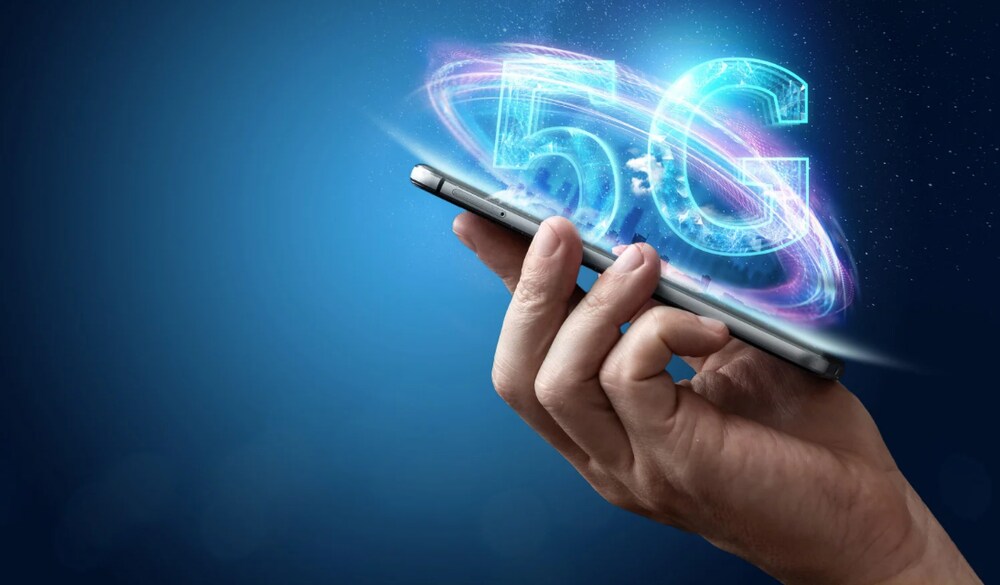
Wi-Fi vs Cellular Data
Let’s break down Wi-Fi and Cellular Data! Both are ways to connect your devices to the Internet, but they are different in how they connect your device.
Definition of Cellular Data
To answer the question of what is cellular data, also sometimes referred to as mobile data, we need to highlight that it is separate from Wi-Fi. Cellular data allows your phone or tablet to access the internet when you’re not connected to Wi-Fi. It works by using a network of cell towers to transmit data wirelessly. These towers connect your device to a larger cellular network, giving you access to websites and apps just like you would at home. Cellular data is typically measured in megabytes (MB) and gigabytes (GB), and depending on your plan, you may have a monthly data allowance or be charged for individual data usage.
Definition of Wi-Fi
Wi-Fi is a technology that uses radio waves to connect electronic devices to the internet or to each other wirelessly. It eliminates the need for physical cables to connect devices, offering more flexibility and convenience. A wireless router acts as a hub, broadcasting the internet signal from your modem to your devices within a certain range. Wi-Fi is widely used in homes, offices, and public spaces, allowing us to stay connected to the internet and share data on the go.
Key Differences Between Wi-Fi and Cellular Data
Wifi vs Cellular Data, which is better? In fact, one is not better than the other as they both have distinct and valuable functions.
Wi-Fi vs Cellular data are like two highways to the internet for your devices, but they take different routes. Wi-Fi uses a wireless router to create a local network with a limited range, like at home or in a coffee shop. On the other hand, cellular data connects to cell towers operated by mobile carriers, providing internet access almost anywhere with a signal. This wider reach comes at a cost, as cellular data usage is often tracked and may have limits depending on your wireless plan. Wi-Fi, while generally faster, requires you to be within range of a network.
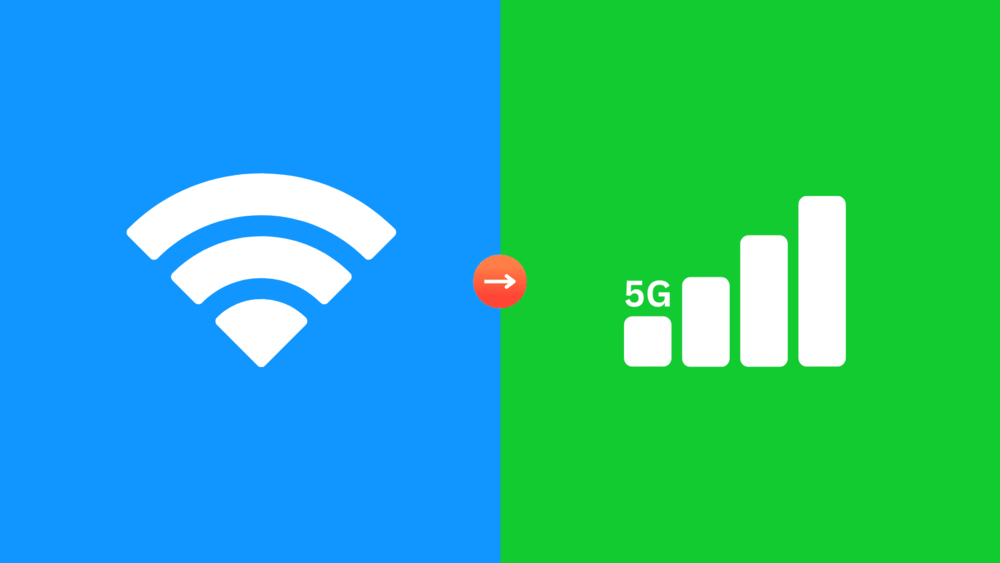
Uses of Cellular Data
We now understand what is cellular data and appreciate the undeniable convenience of cellular data in our daily lives. What do you use it for regularly? Are there surprising capabilities you haven’t discovered yet? By the way, cellular data usage can be reduced even if you don’t use your phone much. Keep reading to unlock hidden cellular data gems!
Common Activities
People rely on cellular data for internet access when they’re away from Wi-Fi hotspots. This allows them to browse websites, use social media, stream music or videos, and download apps on their phones or tablets. It’s essential for things like using ride-sharing services, navigating with maps, or staying connected when traveling.
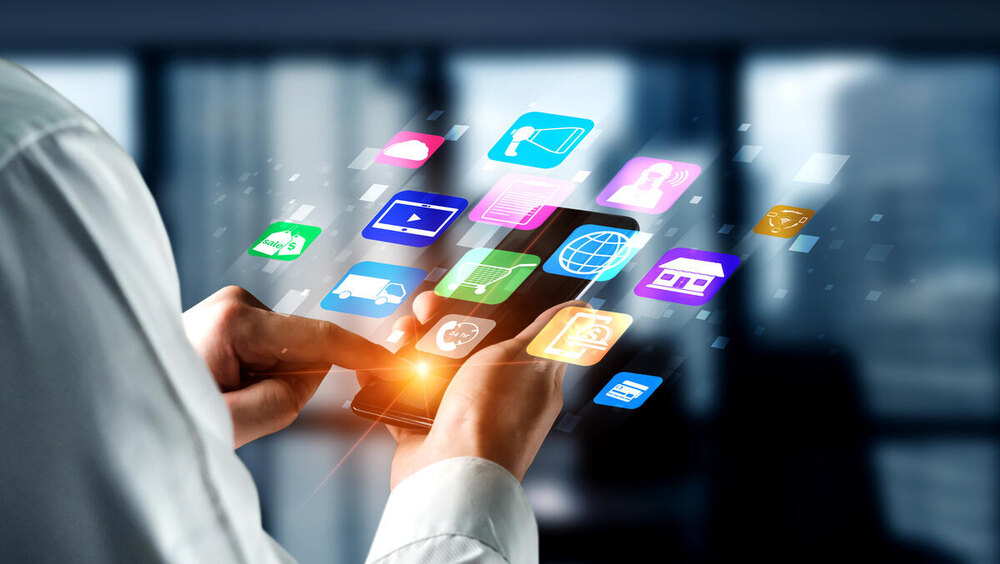
Automatic Data Usage
Did you know that automatic data usage could be a hidden culprit behind a higher phone bill? Background apps, even when you’re not actively using them, can refresh content, send and receive data, and eat away at your mobile data allowance. This can include social media apps constantly checking for updates, email programs fetching new messages, or weather apps refreshing forecasts. By being mindful of background data usage, you can take control of your data consumption and avoid unwanted charges.
Furthermore, automatic data usage isn’t a common feature on smartphones, but some devices have settings that can switch to cellular data when Wi-Fi is weak. This can be helpful if you need a stable connection, but it can also lead to bill shock if you’re on a limited data plan. It’s important to be aware of these settings and turn them off if you don’t want your phone to automatically use cellular data.
Cellular Data Network Types
Cellular data networks have evolved dramatically since their inception. There have been several generations, denoted by 1G, 2G, 3G, 4G, and the newest 5G. These generations not only represent significant leaps in technology but also demonstrate the change in the way we use and explore internet connectivity.
1G: The first generation emerged in the 1980s and was mainly used for basic voice calls with bulky phones.
2G: This second update was introduced in the 1990s, and brought digital signals, enabling clearer calls and SMS texting.
3G: New-gen was launched in the early 2000s, marking the turning point for Mobile Internet. It provided faster data speeds, allowing users to browse the web, download emails, and even make video calls.
4G: This major improvement was rolled out around 2010, offering significantly faster data speeds and improved capacity. It was also making mobile internet a reliable alternative to Wi-Fi for activities like streaming music and high-definition video.
5G: The latest generation, 5G, arrived in 2019 and promises a true revolution. With ultra-fast speeds, ultra-low latency (response time), and massive network capacity, 5G opens doors for applications like self-driving cars, remote surgery, virtual reality, and the Internet of Things (IoT).

2. How to Manage Cellular Data
What to do if your cellular data is not working? There are a few reasons why this might happen, like hitting your data limit. This can lead to slower speeds, unexpected charges, or even a service suspension. But before we dive into troubleshooting, let’s address a key question: how much data do I need? Choosing the right plan can fulfill your needs and avoid these issues altogether!
Data Plans and Roaming
If you frequently jet set around the globe or rely on your phone for internet access and apps while abroad, consider a plan with international roaming. However, for those who are firmly landlocked, a plan without roaming might be a better fit. These plans are often cheaper and can come with much larger data allowances for domestic use. So, which plan is the better choice?

Understanding Data Plans
A data plan is like a subscription for using the internet on your phone or other mobile device, offered by cell phone companies. It provides a set amount of data, typically measured in gigabytes (GB), that you can use each month to access the internet. In other words, it’s like a bucket of data for your phone. This data allows you to do things like browse websites, use GPS, stream music and videos, and use social media. Data plans are important because, without one, you won’t be able to use most internet features on your phone unless you’re connected to Wi-Fi.
Read more: Why AirVoice Wireless Can Offer You the Most Affordable Phone Price?
What is Cellular Data roaming?
Moreover, what is cellular data roaming, when you travel outside your carrier’s coverage area, you’ll need data roaming to keep using this data. Data roaming can be expensive, so it’s important to check with your carrier about their roaming rates or consider alternative options like purchasing a local SIM card at your destination.
Checking Usage and Settings
Checking your usage and settings is a vital step to understanding and optimizing your device’s performance. This can involve monitoring data consumption by apps on your phone or computer, or checking how long your device has been running. By understanding your usage patterns, you can adjust settings to improve battery life, manage storage space, or even set data usage limits to avoid exceeding your plan.
How to Check Data Usage on iPhone and Android
Checking your mobile data usage is crucial to avoid unexpected charges and make the most of your data plan. Without monitoring it, you might be faced with the concern about what to do if your cellular data is not working or exceeding your data limit and incurring overage fees. Additionally, tracking data usage helps identify apps that consume the most data, allowing you to adjust your habits or restrict background data for a specific app.
For Apple fans, what is cellular data on iphone, it sounds like having Wi-Fi in your pocket. How to check data usage on iphone? Just head to Settings > Cellular. There you can easily see your data usage and even turn it off for specific apps to stay in control. Therefore, rest assured, you can keep enjoying all the benefits of your iPhone, wherever life takes you.
Additionally, let’s explore what is cellular data on Android and how to optimize it. Cellular data itself isn’t affected by your phone type (smartphone or tablet) or operating system (Android or iOS). However, this guide focuses on how to check data usage on Android devices. Here is how: Head to your Settings app and navigate to “Network & internet” followed by “Internet.” There, you’ll see your total data usage displayed. For a more detailed look, tap on “App data usage” to see which apps are using the most data and for what timeframe.
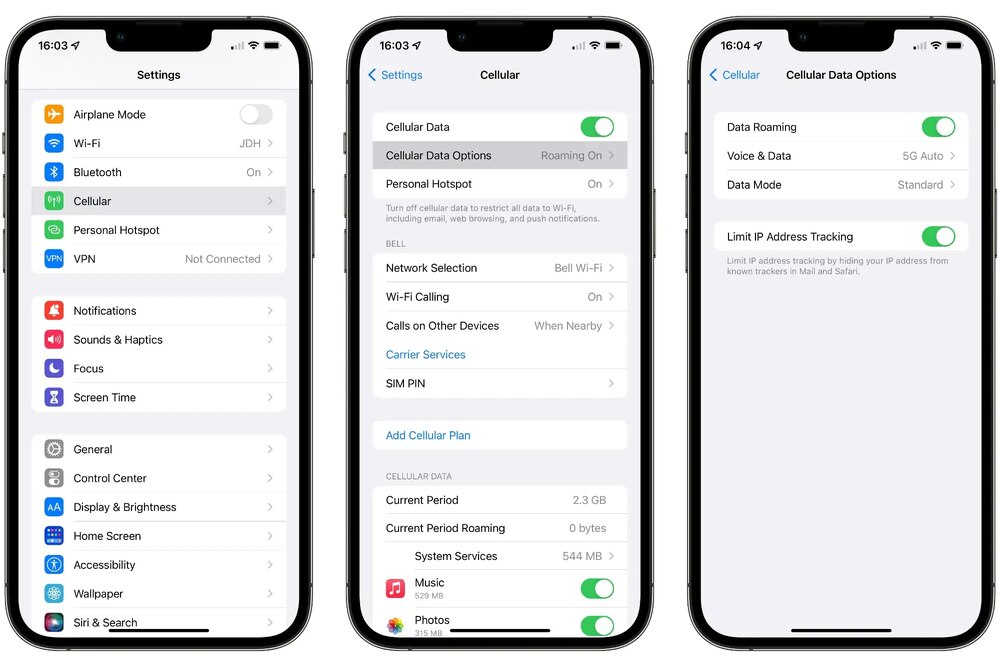
Managing Data Usage via Settings
What to do if your cellular data is not working? Managing your data usage on your phone can help you avoid exceeding your plan’s limits and overage charges. To do this, you can access your data usage settings through your phone’s main settings menu. There, you’ll be able to see how much data you’ve used overall and by individual apps. By identifying the apps that use the most data, you can then set data limits or restrict background data usage for those apps, giving you more control over your data consumption.
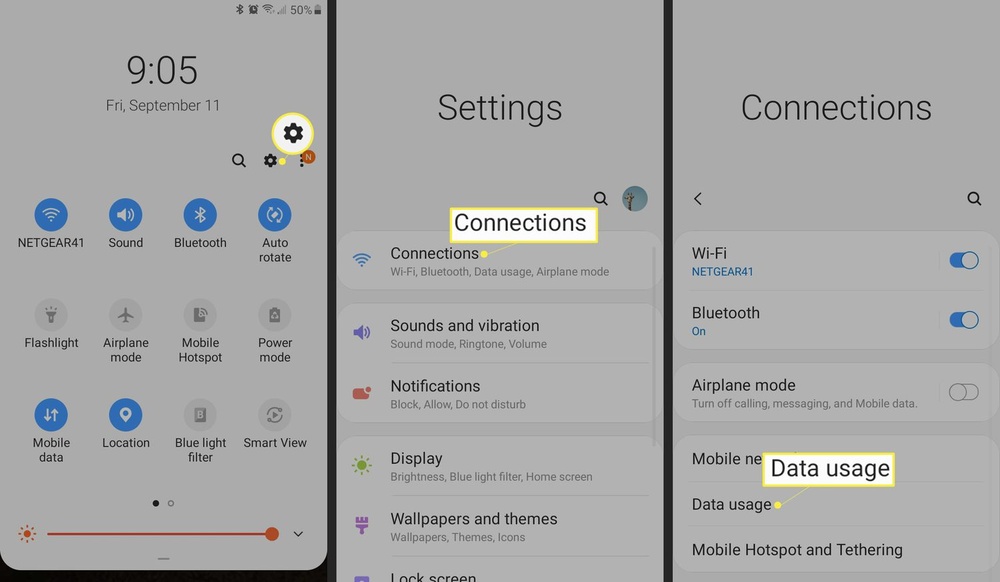
How Much Data Do I Need
The amount of data you need depends on your internet habits. Low users who browse the web occasionally and use social media lightly might be fine with 1-2 gigabytes (GB) per month. Streamers, gamers, and those who constantly download files can easily use 100 GBs or more. If you’re unsure, start by tracking your data usage for a month. Most phone plans and internet providers have tools to help you do this. Once you know your baseline usage, you will have an answer for the question how much data do i need?
Read more: Where Do I Begin when Choosing the Best Wireless Provider?
Smart Data Saving Techniques
Save money and extend your mobile data plan with smart data-saving techniques. By tracking your usage and utilizing Wi-Fi whenever possible, you can take control. Built-in features on your phone, like Data Saver mode, can further reduce background data usage. Check out some of the techniques below that will help you save even more!
Data Saver Modes
Data saver mode is a feature on smartphones that help to conserve your mobile data usage. When activated, it restricts background data access for most apps, meaning they can only refresh and receive information when you’re actively using them. This is useful for those individuals on limited data plans or for those who want to avoid unexpected data charges. Turning on data saver mode is usually straightforward. You can typically find it within your phone’s network settings menu and it can be toggled on or off with a simple tap.

App Refresh Management
App refresh management controls how your apps update themselves in the background. This can be helpful for keeping apps up-to-date with the latest information, but it can also drain your battery and data usage. By managing app refresh, you can choose which apps can refresh in the background and when (only on Wi-Fi or always). This allows you to optimize your phone’s performance by keeping important apps updated while reducing battery drain from less critical ones.
Prioritizing Wi-Fi
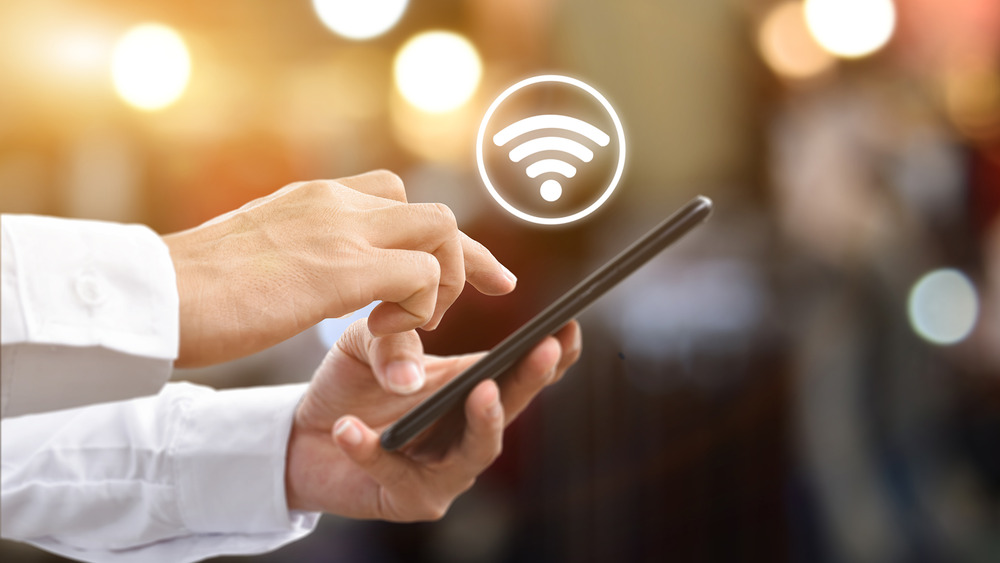
Prioritizing Wi-Fi is a key strategy to save on mobile data usage. By automatically connecting to Wi-Fi networks whenever available, your device minimizes reliance on cellular data, which often comes with data caps and charges. This is especially important for data-heavy activities like streaming videos, downloading large files, or playing online games. By making Wi-Fi your primary connection, you can avoid unexpected data overages and keep your mobile data plan for situations where Wi-Fi isn’t accessible.
3. Optimizing Your Mobile Data Experience
Mobile Data Speeds
Mobile data speeds refer to the rate at which your phone can download and upload information over a cellular network. Measured in megabits per second (Mbps), it determines how quickly you can browse websites, stream videos, or download files. Speeds vary depending on the generation of your network (3G, 4G, or 5G), with newer generations offering significantly faster connections. Factors like location, network congestion, and your data plan can also impact the speeds you experience.
What Speeds Do You Need?
How much data do I need for basic internet usage, a data speed between 3 and 8 Mbps should be sufficient. This allows you to check email, browse websites, and even stream videos in standard definition (SD). However, if you want to experience high definition (HD) streaming, online gaming, or video conferencing, you’ll need a faster speed. Speeds ranging from 12 Mbps to 99 Mbps are considered medium service and can accommodate these activities for a single user or a small household. Remember, the number of devices connected, and the desired quality of service will also influence the ideal data speed for you.
5G Explained
5G is the latest advancement in mobile network technology, promising much faster speeds and improved connectivity compared to 4G. In theory, 5G can reach mind-blowing speeds of 20 Gigabits per second (Gbps), which is up to 100 times faster than what you get with 4G. However, these are ideal conditions and real-world speeds currently range from 1.4 to 14 times faster than 4G. Despite this, 5G is still a significant leap forward, allowing you to download movies in seconds and experience smoother streaming and gaming.
Choosing the Right Data Plan
How much data do I need? Feeling lost in the sea of data plans? Relax, finding the perfect fit for your needs is simpler than you think. Learn more tips here. By considering your data usage habits, coverage area, and budget, you can select a data plan that keeps you connected without breaking the bank.
Understanding “Unlimited” Plans
How much data do I need? Would an unlimited plan be the best choice? An unlimited plan, typically offered by cell phone providers, is a service agreement that gives you a set monthly fee in exchange for unlimited usage of certain resources. Most commonly, this refers to unlimited data, allowing you to browse the internet, stream videos, and download files without worrying about hitting a data cap and incurring overage charges. Unlimited plans may also include unlimited talk and text messages, letting you chat and call for as long as you want without any additional cost.
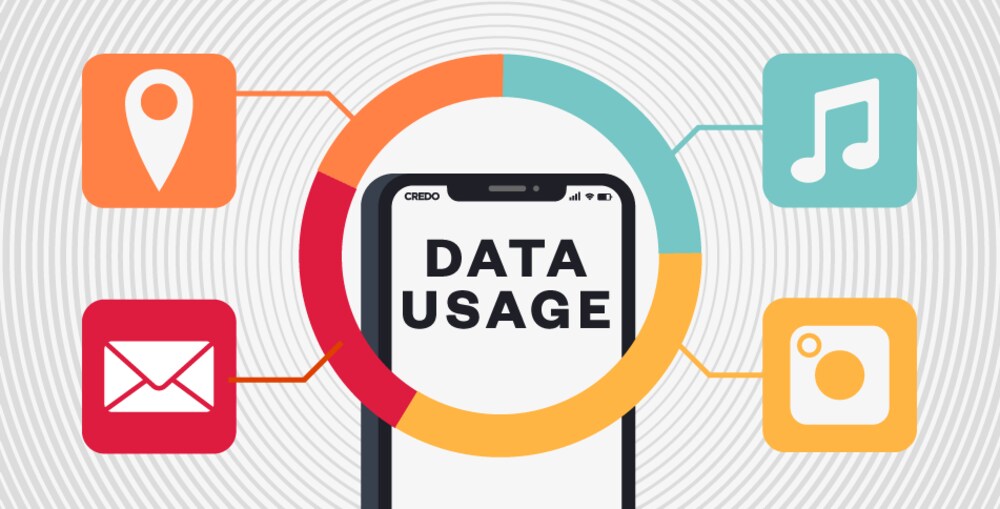
Click here to discover the convenience and savings of unlimited plans! Explore our high-speed data and enjoy unrestricted usage.
Selecting a Suitable Plan
Choosing the right data plan depends on a few key factors. First, consider your data usage. How much data do you typically use each month? This will help determine the data allowance you need. Next, think about network coverage. Where do you spend most of your time? Make sure the carrier you choose offers good signal strength in those areas. Finally, compare plan features and pricing. Do you need unlimited talk and text? Are there any additional features like international calling or hotspot data that are important to you? By considering these factors, you can find a data plan that fits your needs and budget.
AirVoice Wireless offers incredible value with plans starting at just $9.17 per month! For this amazing price, you’ll get all the benefits you need, including blazing-fast 5G+ internet, Unlimited international calling, Unlimited talk and text, and more.
4. Going Further with Cellular Data
While we’re still in the early stages of 5G, the future of cellular data is expected to push even further. Focus will be on maximizing existing 5G potential through advancements like 5G-Advanced, which will bring faster speeds, better efficiency, and even more capacity. Beyond that, researchers are looking towards 6G, which is still far off but promises mind-blowing data rates that will support entirely new applications and reshape how we connect with the world.
Mobile Data Best Practices
Conserve mobile data on your devices by following these practices: First, identify and remove data-hungry apps. Utilize MDM software to whitelist only business-essential applications and restrict others. Additionally, consider uninstalling pre-installed apps that run background data refreshes. Finally, explore data-saving features within your device and frequently used apps. By implementing these steps, you can optimize mobile data usage and avoid exceeding data plans.
Exploring Alternative Carriers
Several wireless carriers offer affordable data plans depending on your needs. Prepaid carriers like AirVoice Wireless have the most competitive rates, especially for those who prepay for several months at a time. These plans can offer unlimited data for as low as $30 a month. It’s always a good idea to check out current promotions and unique advantages to find the best deal for your data usage and coverage needs.
5. FAQs
What is cellular data?
Cellular data is the wireless signal your phone uses to access the internet when you’re not connected to Wi-Fi. It allows you to browse websites, stream music and videos, use social media, and download apps – all without needing a Wi-Fi connection.
What are the benefits of using cellular data?
- Convenience: Access the internet anytime, anywhere, without relying on Wi-Fi hotspots.
- Stay connected: Use your phone for essential tasks like navigation, emails, and messaging even without Wi-Fi.
- Entertainment: Stream music, movies, and shows on the go.
What is cellular data on android? What is cellular data on iphone?
For iPhone:
- Go to Settings.
- Tap on Cellular or Mobile Data (depending on your iOS version).
- Scroll down to find the section labeled Cellular Data Usage or Mobile Data Usage. This will show you the total amount of data you’ve used during your current billing period.
- You can also see a breakdown of how much data each app has used by scrolling down further.
For Android:
- Go to Settings.
- Depending on your device, you might see an option labeled Data Usage directly, or you might need to navigate to Connections first.
- Tap on Data Usage. This will give you a summary of your data usage during your current billing period.
- For a more detailed view, tap on Mobile data usage. This will show you a breakdown of how much data each app has used.
How can I monitor my cellular data usage?
- Open the Settings app on your iPhone.
- Tap on Cellular (or Mobile Data depending on your iOS version).
- You’ll see your total cellular data usage for the current billing period at the top of the screen. This will be labeled “Cellular Data” or “Mobile Data.”
- Below that, you can see a list of apps and how much cellular data each has used. You can toggle the switch next to an app to turn cellular data usage off for that specific app.
What is cellular data roaming?
Cellular data roaming refers to using your phone’s data services when you’re outside your carrier’s network coverage area. This allows you to stay connected to the internet, access emails, browse websites, and use apps that require data, even while traveling.
However, it’s important to be aware that data roaming charges can be expensive. Rates vary depending on your carrier and destination, so it’s wise to check their specific rates before using data roaming.






